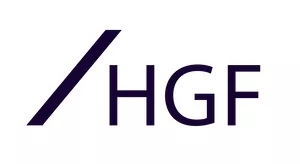With news that the Austrian parliament has ratified the Protocol on the provisional application of the Agreement on a Unified Patent Court on 2 December 2020, the Unified Patent Court (UPC) opening in 2022 is becoming more likely. This will be a significant change to the patent litigation landscape in Europe and will harmonise patent litigation across up to 24 EU Member States (MS). It will also mean that patentees can choose to validate a Unitary Patent (UP) that will cover all EU MS who have ratified the UPC Agreement (R-MS).
When Austria deposits its ratification of the Protocol this will trigger the provisional phase of the UPC. During the provisional phase, secondary legislation will be finalised, budgets set and Judges appointed before the UPC opens its doors. It is estimated that the provisional phase will take 8-10 months, following which Germany will deposit its ratification of the UPC Agreement (UPCA) triggering the launch of the UPC four months later. Based on current ratifications of the UPCA, on launch the UPC and UP will cover 17 EU MS, including Germany, France, Italy and The Netherlands.
The launch of the UPC will not alter the prosecution or opposition of EPs but at grant there will now be the opportunity to validate a new UP designation. Validating a UP will create a designation with unitary effect across all R-MS, which will sit alongside other national patents validated from the EP. The request for a UP must be made within one month of the date of grant and we expect that the EPO will offer a three-month Sunrise Period for validation of a UP before the UPC launch. The EP(UP) is subject to the exclusive jurisdiction of the UPC and cannot be opted-out.
The UPC is an entirely new common patents court for the litigation of EP(UPs) and any EP validated in R-MS that have not been opted-out. The UPC's will have jurisdiction over (i) infringement and related defences and licences; (ii) declarations of non-infringement; (iii) protective measures and injunctions; (iv) damages; (v) revocation and counterclaims for revocation; and (vi) compensation for licences of right. With the geographical reach of the UPC, pan-UPC injunctions could be extremely powerful tools for patentees. Equally, a patent under its jurisdiction can be revoked in a single action. This could be particularly attractive to a potential defendant who has missed the EPO opposition period.
The UPC will be located in local and regional courts located across the R-MS. The Central Division will be located in Paris and Munich, with the Registry and Court of Appeal located in Luxembourg. Arbitration will also be available.
As this is such a significant change to the patent litigation system, there is a transitional period of at least 7 years where future or granted EPs can be “opted-out” of the jurisdiction of the UPC. The decision as to whether or not to opt-out of the UPC system should be considered now to take advantage of the expected three-month Sunrise Period ahead of launch of the UPC. To avoid litigation in the UPC, opt-outs must be entered in the Opt-Out Register by the patent proprietor. This is not simply just looking at the proprietor listed on the register. To ensure the application to opt-out is made validly, patentees will need to consider who is entitled to be the patent proprietor. Where a patent has been assigned or licensed or is co-owned, it will be necessary to analyse who the correct decision-maker(s) is/are. The Register will be searchable and maintained by the UPC Registry. Provided that no national litigation has been initiated, the opt-out can be withdrawn at a later date.
After decades of discussion and stalled schemes for a pan-EU patent and patent litigation system, it appears that we are on the cusp of the UPC system opening its doors. This is a significant opportunity for patentees to take advantage of a wide-reaching patent right and new patents court. The next few years will be one of transition and change as litigants engage with the UPC's rules and procedures to develop the case law of the UPC alongside the national patents courts.
The content of this article is intended to provide a general guide to the subject matter. Specialist advice should be sought about your specific circumstances.

